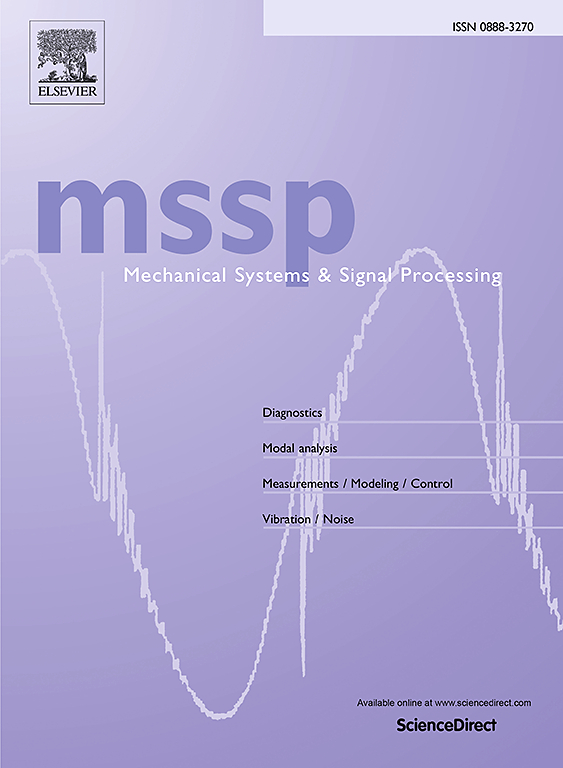Estimating remaining useful life with degraded correlated diffusion coefficient and enhanced state-space model under stable distribution process
IF 7.9
1区 工程技术
Q1 ENGINEERING, MECHANICAL
引用次数: 0
Abstract
The prediction of remaining useful life (RUL) for critical component in mechanical system is crucial for optimizing operational efficiency and preventing unforeseen failure. Although traditional performance degradation models based on stochastic process have achieved significant success in RUL prediction, the fixed diffusion coefficient is commonly used, persisting unrelated to the variability in degradation increment behavior. Moreover, in the update phase of state-space model, the drift coefficient is constrained by the assumption that the current estimate should be identical to the posterior estimate from the previous time step. To address these limitations, an RUL prediction framework based on degraded correlated diffusion coefficient and enhanced state-space model is proposed. By introducing the concept of a time-varying proportional coefficient and integrating the mathematical relationship related to equipment degradation increment behavior, a degradation correlated diffusion coefficient is designed to overcome the limitation of traditional performance degradation models, which assume the diffusion coefficient is fixed. Meanwhile, the joint matrix of the drift coefficient and the time-varying proportion coefficient is embedded into the state equation of the enhanced state space model, allowing for the simultaneous adaptive updating of the drift coefficient and the time-varying proportion coefficient according to the observation equation matrix. Leveraging the evolution process of the time-varying proportion coefficient in conjunction with Monte Carlo simulation facilitates the RUL prediction of mechanical equipment and enables the quantification of associated uncertainties. The proposed RUL prediction framework is validated using full lifecycle data from on-site truck rear axle and benchmark rolling bearing datasets. The results of the cases study and comparative analysis provide validation of the effectiveness and superiority of the proposed method.
求助全文
约1分钟内获得全文
求助全文
来源期刊

Mechanical Systems and Signal Processing
工程技术-工程:机械
CiteScore
14.80
自引率
13.10%
发文量
1183
审稿时长
5.4 months
期刊介绍:
Journal Name: Mechanical Systems and Signal Processing (MSSP)
Interdisciplinary Focus:
Mechanical, Aerospace, and Civil Engineering
Purpose:Reporting scientific advancements of the highest quality
Arising from new techniques in sensing, instrumentation, signal processing, modelling, and control of dynamic systems
 求助内容:
求助内容: 应助结果提醒方式:
应助结果提醒方式:


